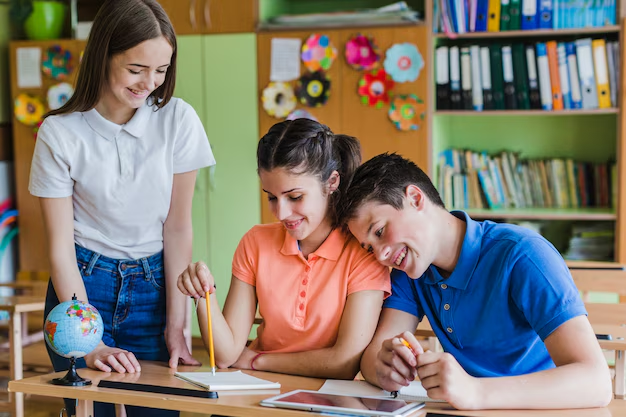Student Centered Learning In an era where education is constantly evolving, the traditional teacher-centered approach is gradually giving way to student-centered learning. This paradigm shift emphasizes the role of students as active participants in their own education, fostering engagement, motivation, and critical thinking skills. By implementing effective strategies for student-centered learning, educators can create dynamic classroom environments that not only enhance academic performance but also prepare students for lifelong learning.
Understanding Student-Centered Learning
Student-centered learning focuses on the individual needs, interests, and learning styles of students. It prioritizes collaboration, problem-solving, and critical thinking over rote memorization. In this approach, students take ownership of their learning, which leads to increased engagement and motivation. To achieve this, educators must utilize various strategies that promote active participation and collaboration among students.
Strategies for Effective Student-Centered Learning

1. Collaborative Learning
Encouraging students to work together fosters a sense of community and allows them to learn from one another. Group projects, peer reviews, and cooperative problem-solving activities can enhance communication skills and promote teamwork. This approach not only builds social skills but also encourages students to take responsibility for their learning.
2. Inquiry-Based Learning
Inquiry-based learning involves posing questions or problems that students must investigate. This strategy promotes curiosity and critical thinking. By allowing students to explore topics of interest, they become more invested in their learning. Teachers can facilitate this process by providing guidance and resources while allowing students to lead their inquiries.
3. Differentiated Instruction
Recognizing that students have diverse learning needs is crucial for effective student-centered learning. Differentiated instruction tailors teaching methods to accommodate various learning styles and abilities. Teachers can use a mix of visual, auditory, and kinesthetic activities to ensure all students are engaged and challenged appropriately.
4. Technology Integration
Incorporating technology in the classroom can significantly enhance student-centered learning. Tools such as online discussion forums, interactive simulations, and educational apps can provide students with additional resources and opportunities for collaboration. Technology not only facilitates communication but also allows for personalized learning experiences.
5. Project-Based Learning (PBL)

Project-based learning engages students in real-world challenges and encourages them to apply their knowledge and skills. In PBL, students work on a project over an extended period, allowing for deep exploration of a subject. This method fosters critical thinking, creativity, and practical problem-solving skills, making learning relevant and meaningful.
6. Formative Assessment and Feedback
Regular formative assessments provide insights into students’ understanding and progress. Feedback is crucial for helping students reflect on their learning and identify areas for improvement. Teachers can implement self-assessments, peer assessments, and regular check-ins to create a feedback-rich environment that supports growth.
7. Flexible Learning Environments
Creating a flexible learning environment allows students to choose how they engage with content. This may involve rearranging the classroom layout for group work, providing spaces for quiet reflection, or offering a choice of learning materials. A flexible environment accommodates various learning preferences and promotes student agency.
8. Cultivating a Growth Mindset

Encouraging a growth mindset is essential for student-centered learning. When students believe that their abilities can be developed through dedication and hard work, they are more likely to take risks and embrace challenges. Educators can model a growth mindset by praising effort over innate ability and encouraging resilience.
Also Read : The Impact Of Education Policy On Student Outcomes
Conclusion
Effective student-centered learning is about creating an environment where students feel empowered to take charge of their education. By implementing strategies such as collaborative learning, inquiry-based activities, differentiated instruction, and technology integration, educators can foster a culture of engagement and motivation. These strategies not only enhance academic performance but also prepare students for the complexities of the modern world. As we continue to navigate the ever-changing landscape of education, embracing student-centered learning will be key to nurturing critical thinkers and lifelong learners.
FAQs
Q: What is student-centered learning?
Student-centered learning is an educational approach that emphasizes the active participation of students in their own learning process, focusing on their individual needs, interests, and learning styles.
Q: Why is student-centered learning important?
It promotes engagement, motivation, and critical thinking skills, preparing students for real-world challenges and fostering lifelong learning habits.
Q: How can I implement student-centered learning in my classroom?
You can implement it through strategies like collaborative learning, inquiry-based learning, differentiated instruction, and integrating technology.
Q: What role does technology play in student-centered learning?
Technology enhances student-centered learning by providing interactive resources, facilitating collaboration, and allowing for personalized learning experiences.
Q: How can I assess student-centered learning?
Formative assessments, self-assessments, peer assessments, and regular feedback sessions are effective ways to assess student-centered learning.





